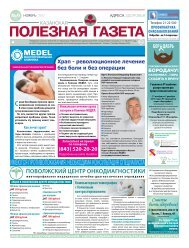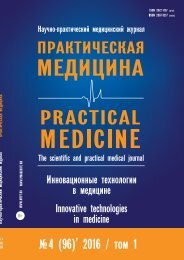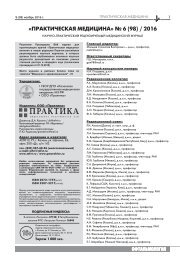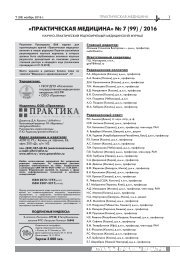Д с обл
You also want an ePaper? Increase the reach of your titles
YUMPU automatically turns print PDFs into web optimized ePapers that Google loves.
‘5 (106) <strong>с</strong>ентябрь 2017 г.<br />
ПРАКТИЧЕСКАЯ МЕ<strong>Д</strong>ИЦИНА 29<br />
For correspondence:<br />
Zakharova I.N. — D. Med. Sc., Professor, Honored Doctor the Russian Federation, Head of the Department of Pediatrics of the Russian Medical<br />
Academy of Continuous Post-graduate training, 2/1 Barrikadnaya Str., Moscow, Russian Federation, 125993, tel. (499) 252-21-04,<br />
e-mail: zakharova-rmapo@yandex.ru<br />
The article is devoted to the analysis of vitamin D provision for children belonging to different age groups and living in Moscow, and to the<br />
assess of the seasonality of fluctuations in vitamin D levels in this population. The results of the determination of the level 25 (OH) D in 1,041<br />
children aged 1 month to 18 years collected during the period from 2012 to 2015 are analyzed. According to the analysis, regardless of age,<br />
a high percentage of vitamin D deficiency among children in the city of Moscow was detected. The generally accepted optimal level of a metabolite<br />
of vitamin D-calcidiol in the blood (> 30 ng / ml) was observed only in a small part of the subjects (26%), while the greater part (74%)<br />
showed an insufficient level of vitamin D of varying severity: 28%- insufficiency (20-29 ng / ml), 33% - deficiency (

















